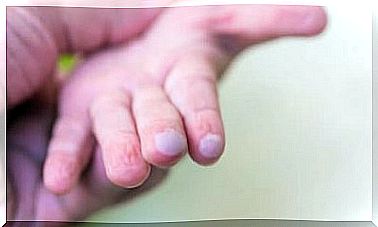Uterine Fibroids During Pregnancy

What do you know about uterine fibroids? If you do not know much or have never heard of it, do not worry, because in this article we will give you all the information you need.
First of all, you need to remember that it is normal for you to feel some discomfort during your period. For example, some women suffer from quite intense pain that can be accompanied by various symptoms. Does this sound familiar to you?
There are also women who experience hormonal disorders that lead to either an unusually long or a virtually non-existent menstruation. These symptoms can be quite bothersome and they sometimes occur due to a fibroid in the uterus.
Hormones are responsible for protecting our skeleton, the cardiovascular system and the distribution of body fat. When hormone levels are low, they can cause physical and emotional changes.
Hypersensitivity, sudden changes in behavior and continuous irritability are just some of the moods in which hormones can play a role.
Hormonal changes are not always dangerous as long as they do not interfere with a pregnant woman’s daily life. Fortunately, hormonal changes, just like a uterine fibroid, can be treated.
What negative effects can a fibroid have during pregnancy?
A fibroid is a muscle knot that forms inside the uterus and uterine muscles. It is considered a benign tumor and usually has no symptoms . You only need to worry about fibroids if they are bleeding or causing pain.
They are only dangerous in very specific situations. This is why it is recommended that you monitor the size of the muscle knots, especially if you are planning for a pregnancy.

During pregnancy, estrogen levels increase, and this can cause the tumor to increase in size. However, in some cases the knots may remain the same size or even decrease.
No matter what happens, it is always best to consult your doctor so that he or she can give you appropriate guidelines to follow.
Complications of uterine fibroids during pregnancy
If the nodules increase in size, it can pose a risk to the fetus. It can also lead to a displacement of the placenta which can result in a premature birth.
Myoma can also cause limited intrauterine growth, which is a condition characterized by abnormal development of the embryo.
This complication can also be caused by malnutrition, drug intake, high blood pressure and certain infections. Your doctor may recommend a caesarean section. It may be the safest method of delivery for the baby.
If the fibroid is in a bad position, it can inhibit childbirth. This makes a caesarean section the only possible option.
As long as the nodules do not grow and do not sit in a bad place, the mother can still give birth naturally through the vagina.
How to treat a fibroid?
There are several ways to treat a fibroid. Some treatment methods are more invasive than others.
The treatment options depend on a number of criteria; for example, if one of the symptoms is pain, if the nodules are growing or if you have several fibroids, they may need to be removed.
Surgical treatment
Myomectomy is the surgical removal of fibroids . There are several surgical options; for example, one can remove the fibroid by peephole surgery with a small camera. The method is only useful if the fibroid is small.
In severe situations, a hysterectomy may be necessary, which completely removes the uterus. However, it is only recommended for women who do not want children.

Hormone treatment
This type of treatment aims to reduce the concentration of estrogen in the body. This results in the fibroid shrinking in size.
Embolization
This is a mixture of pharmacological treatment and surgery. Embolization gradually shrinks the fibroid within a few months by blocking the blood supply to the muscle nodes.
It does not require anesthesia, so it is an easier option than surgically removing the fibroid or uterus. The procedure lasts for between 1 to 3 hours.
Regardless of which option you choose, it is important to follow your doctor’s advice. It is just as dangerous to undergo unnecessary surgery as to ignore warning signs.









